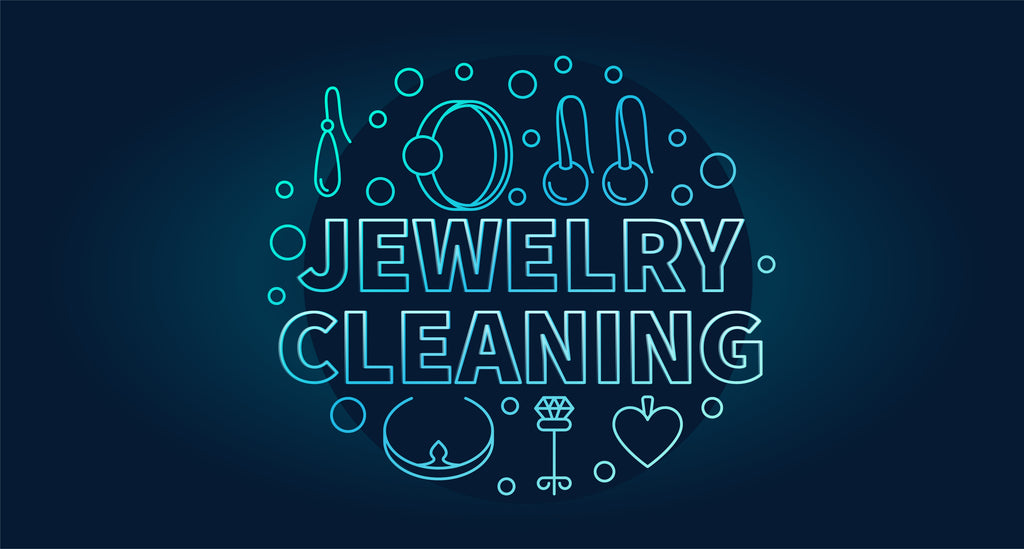How to take care of your jewelry to give it a long, beautiful life
Although costume jewelry and fine jewelry are crafted from different materials and have different values, many of the same rules apply to the care of both types.
1. Know When to Remove Your Jewelry
No matter what materials are involved, jewelry is delicate. You should always remove your jewelry when working with your hands or engaging in activities that involve chemicals or abrasives. Take off your jewelry before any of the following:
-
Swimming in water that has been treated with chlorine
-
Cleaning your home
-
Working in the garden
-
Playing sports, especially contact sports
2. Put Your Jewelry on Last
It's tempting to put your jewelry on as you get dressed in the morning or prepare for a night out. However, it's better to wait until you're completely ready before donning your jewels. Whether you're wearing diamonds or rhinestones, the chemicals from make-up, hair products, and perfume can damage your pieces. It's best to think of jewelry as the finishing touch for your look.
3. Don't Wear Lotion With Jewelry
Although occasional exposure to hand and body lotion won't damage most fine jewelry, it can destroy the finish on costume pieces. In addition, build-up of lotion products can lead to more frequent cleaning of your valuable items. It's best to put lotion on your hands or body after you've taken your jewelry off at night.
4. Store Your Pieces Separately
No matter how careful you are when wearing your jewelry, it can also sustain damage during storage. Often, this comes from pieces knocking together or getting tangled. Particularly vulnerable materials include pearls, wood, plastic, precious metals, and some gemstones. The best way to solve this problem is to store your items so they can't touch one another.
Consider some of these jewelry storage ideas:
-
Jewelry tree for necklaces and earrings
-
Separate cloth pouches for precious or vintage items
-
Jewelry armoires for all your pieces
-
Individual jewelry cases for your most valuable items
-
Tarnish-resistant jewelry bags for silver pieces
5. Travel With a Jewelry Case
While regular storage is important, travel storage is even more essential. Tossing your jewelry in a toiletry bag or suitcase can cause a great deal of damage. You can protect your pieces by using specially designed travel jewelry cases or jewelry rolls that will keep you special items safe and tangle-free.
6. Check Your Pieces Regularly
As you wear and store your jewelry, it's easy for pieces to get dirty and damaged. Before you put on a pair of earrings or a necklace, take a good look at the item. Then you can identify those pieces that need cleaning or repair.
Ask yourself the following questions:
-
If it has a clasp, is the clasp secure?
-
Are the stones set solidly in the piece? Do they wiggle at all?
-
Is the item sparkling and beautiful, or is it starting to get dirty?
-
Are there scratches or other areas of damage?
-
Does the items have tarnish or other finish issues?
7. Learn About Your Pieces Before Cleaning
Before you try to clean any of your jewelry items, it's essential that you know about the materials used in constructing your treasures. There are very different procedures for cleaning diamonds or zirconia rings and pearl jewelry, for instance. Certain types of costume jewelry should never be submerged in water, while special mild polishes can restore the shine to sterling silver necklaces.
Examine your jewelry for information about the materials in it. Often, you'll find a stamp on the back or inside of a piece that may tell you the metal content. Make a note of the gems or other materials when you purchase new pieces. That way, you'll know what to do when you need to clean your items.
8. Make a Jewelry Care Kit
It's helpful to have all your jewelry care supplies in one place so you can clean and repair your items without having to hunt down the necessary tools and materials. You can create a simple jewelry care kit using a small plastic storage container. Place the following items inside:
-
Gentle, jewelry-safe silver polish for sterling silver or silver-plated items
-
Commercial jewelry cleaners for diamonds, precious metals, and some gems
-
Soft-bristled brush for getting into crevices
-
Soft chamois cloth for polishing and drying
-
Glue for reattaching gems to inexpensive costume jewelry
-
Rubbing alcohol for hard gems and metals
-
Q-tips for polishing hard-to-reach spots
-
Tweezers for removing lint or resetting costume jewelry stones
9. Allow Your Jewelry to Dry Thoroughly
If you clean your jewelry, it may seem sufficient to pat it dry with a chamois and then store it. However, small amounts of moisture left over from cleaning can destroy your collection. Wait at least an hour after cleaning any piece before you put it back in your jewelry box or case. This will give the moisture enough time to fully evaporate.
10. Understand When to Call a Professional
Cleaning and minor repairs are something most people can accomplish at home; however, there are some repairs that are best left to professional jewelers. If you encounter the following issues, take your jewelry to someone who can help:
-
Loose gems in fine jewelry or vintage costume pieces
-
Deep scratches
-
Dust or dirt build-up you can't reach
-
Broken clasps or chain links
-
Lost parts
Maintaining Value and Beauty
Caring for you jewelry is an important part of maintaining its value and beauty. From diamond engagement rings to fashion jewelry, every items looks better and lasts longer when you know how to take great care of it. Use your judgment and take your time, and you'll keep your jewelry wardrobe looking as good as new.

